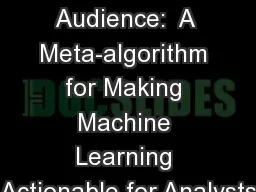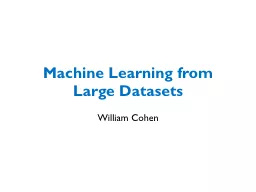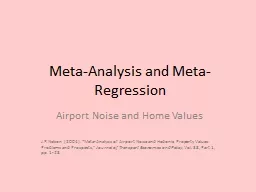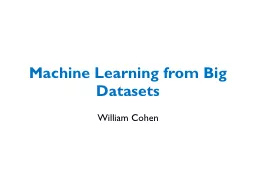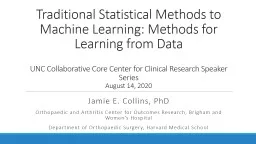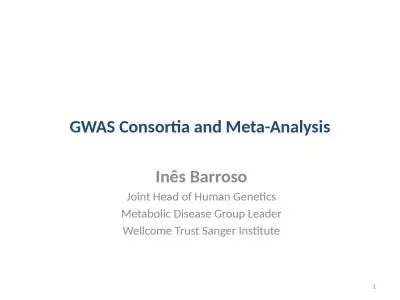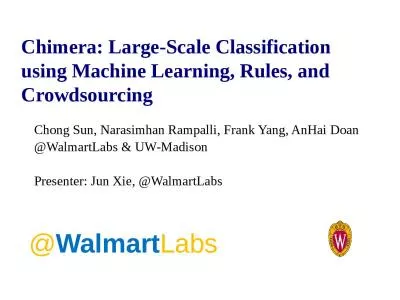PPT-Big Data, Bigger Audience: A Meta-algorithm for Making Machine Learning Actionable for
Author : giovanna-bartolotta | Published Date : 2018-03-17
Dylan Cashman Remco Chang Visual Analytics Lab at Tufts VALT Tufts University Medford MA Stephen Kelley Diane Staheli Cody Fulcher Marianne Procopio MIT Lincoln
Presentation Embed Code
Download Presentation
Download Presentation The PPT/PDF document "Big Data, Bigger Audience: A Meta-algor..." is the property of its rightful owner. Permission is granted to download and print the materials on this website for personal, non-commercial use only, and to display it on your personal computer provided you do not modify the materials and that you retain all copyright notices contained in the materials. By downloading content from our website, you accept the terms of this agreement.
Big Data, Bigger Audience: A Meta-algorithm for Making Machine Learning Actionable for: Transcript
Download Rules Of Document
"Big Data, Bigger Audience: A Meta-algorithm for Making Machine Learning Actionable for"The content belongs to its owner. You may download and print it for personal use, without modification, and keep all copyright notices. By downloading, you agree to these terms.
Related Documents

